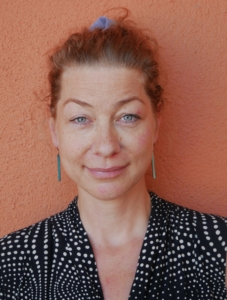
Abstract
Biography
 Ulrike Körber, conservator and integrated researcher at IHA – NOVA FCSH Lisbon, combines advanced study in art history with previous training as a journeyman cabinetmaker (2002, Handelskammer Potsdam, Germany), and as a conservator of wooden artifacts and furniture (2008, FH-Potsdam, Germany).
Ulrike Körber, conservator and integrated researcher at IHA – NOVA FCSH Lisbon, combines advanced study in art history with previous training as a journeyman cabinetmaker (2002, Handelskammer Potsdam, Germany), and as a conservator of wooden artifacts and furniture (2008, FH-Potsdam, Germany).
Since her first contacts with Asian lacquer at the José de Figueiredo Laboratory (JFL) in Lisbon in 2006, she is fascinated by this complex material. Artifacts she encountered during various projects in Lisbon led her to focus on 16th and 17th century Luso-Asian lacquered items manufactured for Catholic European commission, which feature the transfer and transformation of motifs, iconography, materials, and techniques. Variously classified as Indo-Portuguese, Nanban, Singalo-Portuguese, Chinese or Ryūkyūan (today’s Okinawa), the inconsistency with which they fit their assigned categories, mixed materials and techniques, exposed pathologies, and the question of attribution raised curiosity and led to the first collaborative material investigation at the JFL and to her in-depth multidisciplinary PhD research. This received analytical support at the Getty Conservation Institute as part of the RAdICAL international Asian lacquer project.
Her thesis: The Journey of Artifacts: The Study and Characterization of a Nucleus of Lacquered Luso-Asian Objects from the 16th and 17th Centuries (University of Evora, 2019) examined a broader group of diverse parade shields, portable furniture and religious items embellished with East Asian lacquer. By identifying the craft traditions mingled on individual pieces, it revealed unexpected patterns of circulation.
A conservator in private practice in Lisbon, she collaborates with various international institutions. From November 2022 to March 2023, she is conducting research at the Asian Civilizations Museum in Singapore as a post-doc research fellow.




